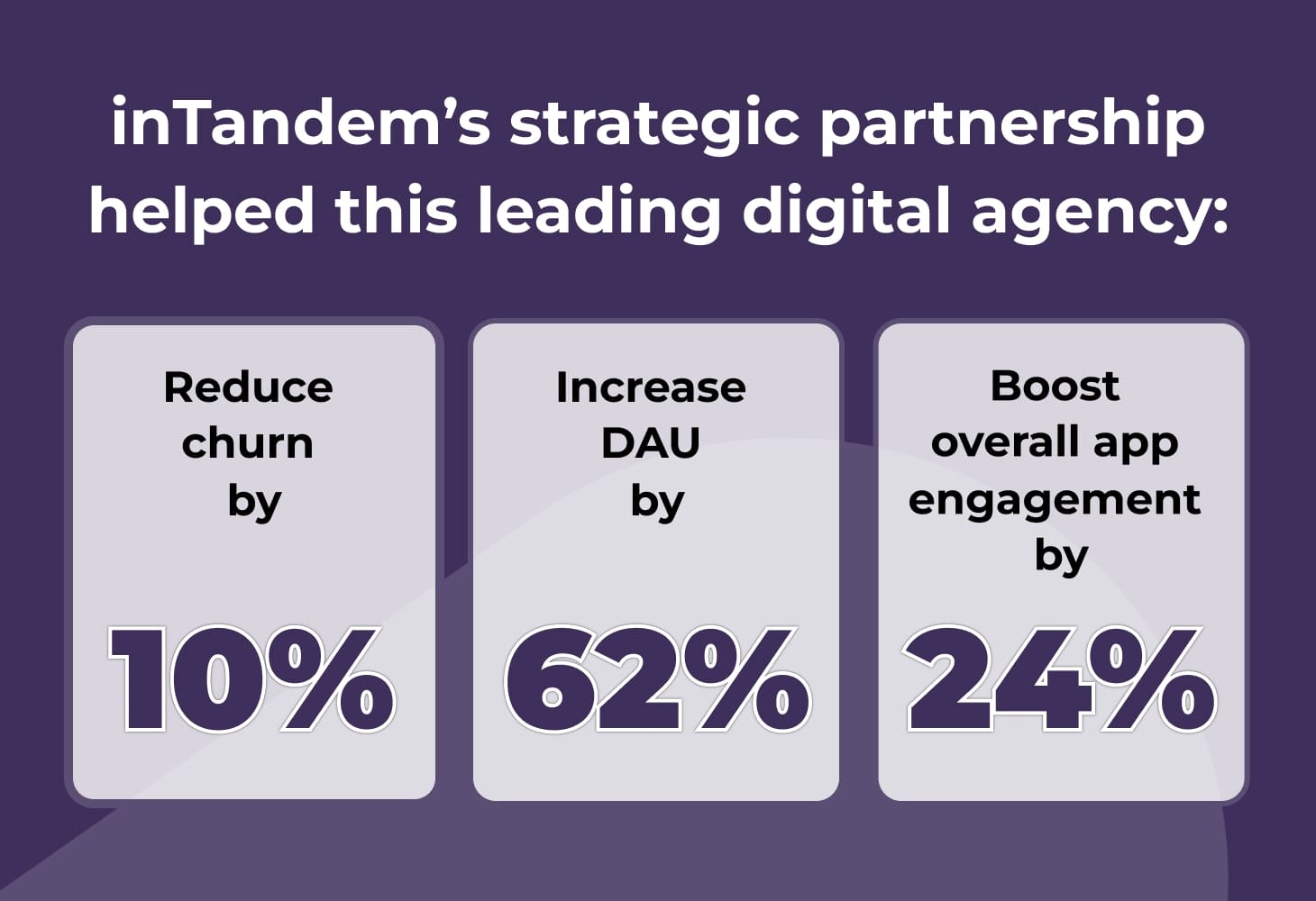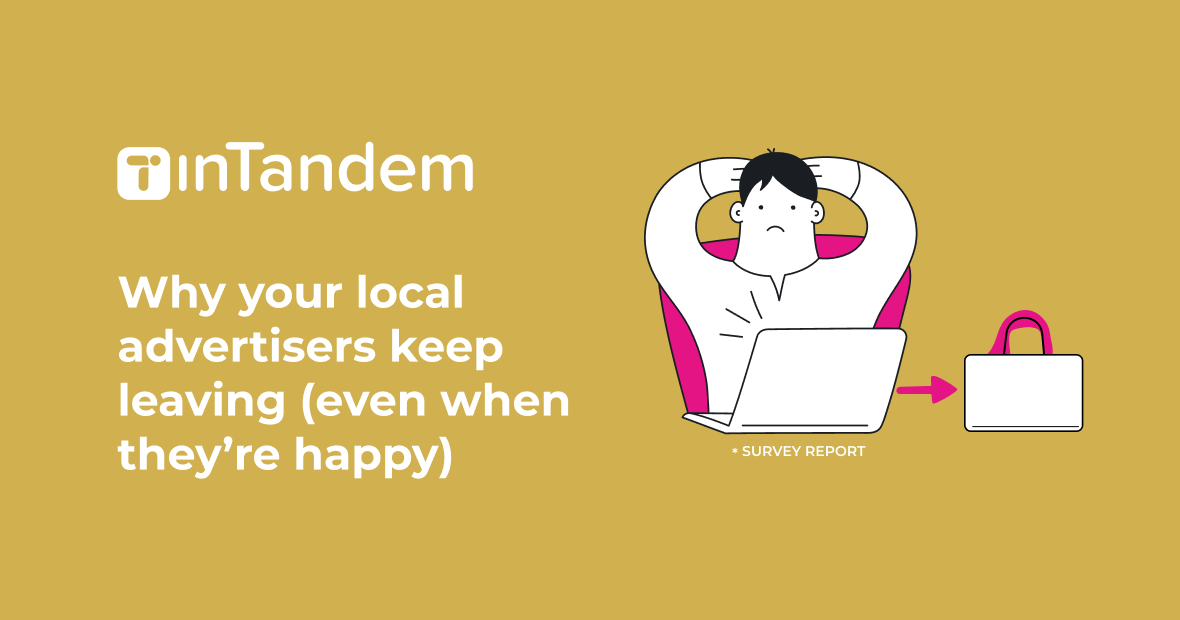Last month, I had the opportunity to attend the Borrell Phoenix Conference, where leaders from local media and advertising came together to explore trends, challenges, and innovations shaping the industry.
One of the highlights was joining a lively panel discussion about client churn in the marketing space. I sat alongside Justin Yurek, Head of Strategy at Townsquare Interactive and Rebecca Kaplan, Regional Digital Sales Director at Cox Media, with Leah Muench, Director of Client Services at Borrell Associates, mediating the discussion.
Our conversation sparked a lot of ideas about why churn remains such a critical issue, and what agencies can do to hold onto their client base. I wanted to share four key takeaways that can help marketing organizations improve retention rates.
Understand why clients leave

Before you can prevent churn, it’s essential to explore what drives customers to make this decision.
In the vast majority of cases, clients leave marketing providers because they don’t feel part of a strong trust relationship. Our own survey at vcita revealed that among the 67% of SMBs who canceled within six months, 17% did so because of a sense of disconnect from their marketing partner.
My fellow panelists and I identified four underlying issues that fuel this disconnect:
1. Inadequate communication
Too many agencies drop the ball on direct client communication. Frequently, they rely on self-service dashboards instead of engaging their clients through calls or emails. SMBs don’t always have time to dig through data on their own, so regular, proactive communication like a simple monthly performance update is key.
Sometimes marketing agencies go dark on their clients, expecting that the client will get in touch if they have any questions. Justin shared that at TownSquare Interactive, they prioritize monthly face-to-face meetings with advertisers whenever possible, setting a high standard for client interaction.
2. Expectations that aren’t aligned
When results don’t meet client expectations, frustration builds quickly. This is a theme that recurred throughout our discussion, but Rebecca Kaplan mentioned that it’s one of the main reasons for client churn. “When the media consultant says, ‘Your ROI is going to go through the roof’, it’s unrealistic and doesn’t align with what the media consultant can deliver.” Aligning expectations from the start and resetting them along the way is critical to success.
3. Billing and payment issues
While it may seem minor, payment issues can be a major cause of early-stage churn. As Justin put it: “In the early months, the number one reason we see someone churn is simply that the credit card stops working.”
Simple billing mistakes and errors in payment processes can be enough to push clients away. The same goes for clients who don’t feel that your pricing matches the value they receive.
4. Pressure from competitors
There are always new offers from rival companies and flashy competitors seeking to claim your customers. But competitors usually succeed because they expose a deeper dissatisfaction, not just because they’ve undercut your price or surpassed your response time. As Justin reminded us, “Those are really root causes. The competitor just came along at the right time and exposed those causes.”
Winning the battle against churn

So, how can marketing agencies keep their clients engaged and loyal? Here are the solutions that we came up with.
Focus on building real partnerships
It’s not enough to deliver services. You need to create a sense of partnership. Rebecca emphasized understanding what success means to the client and ensuring that both parties agree on that metric. Setting KPIs along the way is also a great way to achieve this.
She highlighted the importance of defining your objectives and clarifying expectations from the very beginning, and then delivering clear updates about your progress at regular intervals. This way, you’ll forge a strong relationship through natural communication and connection.
Offer a unique value proposition
Differentiation is key. Agencies that offer solutions tightly aligned with client needs are less vulnerable to competitive threats, so you want to deliver a solution that clearly surpasses all your rivals.
Justin noted that losing clients isn’t about the competition being better; it’s about your offering falling short of client demands. If your solution meets your clients’ needs, they won’t be tempted by a competitor’s lower price or faster response time.
Keep a close eye on client health
Tracking client metrics like engagement, performance, and communication patterns is vital for revealing early warning signs of potential churn. For example, Justin highlighted that unresponsive clients are a major red flag at TownSquare Interactive. If a client goes quiet, it’s time for them to intervene before it’s too late.
Your red flags could be different, so think broadly about which metrics to monitor.
Increase the costs of switching providers
There’s a simple truth: the harder it is for a client to replace you, the less likely they are to churn. Leah recommends making sure that your solution is fully integrated into all your clients’ daily business operations, so that replacing it will be too much hassle. This means pushing add-ons to make your solution as sticky as possible.
At the same time, you should constantly remind clients that real results take time to arrive. That way, they won’t be quick to walk away from the investment they’ve already made towards success, even if a competitor offers shiny discounts.
How inTandem helps marketing companies lower churn
At vcita, we built our inTandem partner program to support agencies to solve exactly these challenges in the ways that the panelists recommended.
With inTandem, agencies can extend their offering beyond marketing, helping SMB clients manage core business activities like payments, scheduling, and client communication. This creates a deeper, more embedded relationship that naturally reduces churn and opens the door to upsells.

For example, one of our top U.S. digital agency partners was struggling with stagnant growth, low customer retention, and rising competition. Operations were plagued by inefficiencies. By integrating inTandem Complete into their offering, they turned their SMB solution into a one-stop business management platform. SMB clients use the new expanded toolkit for vital daily business tasks.
The results were fast and impressive: within three months, they reduced churn by 10%, grew daily branded app engagement by 62%, and lifted overall client activity by 24%. inTandem Complete enabled them to deliver a unique offering that made them stand out in a crowded market
You don’t have to live with high churn rates
Churn will never go away for marketing agencies that serve SMBs, but it doesn’t have to cause you headaches. As revealed by our panel discussion, you just need the right strategies, consistent relationship-building, and a solution that evolves with your clients’ needs.
If you want to explore how you can lower churn and build deeper engagement with your SMB clients, I’d love to show you how inTandem can help. Let’s schedule a call!



























